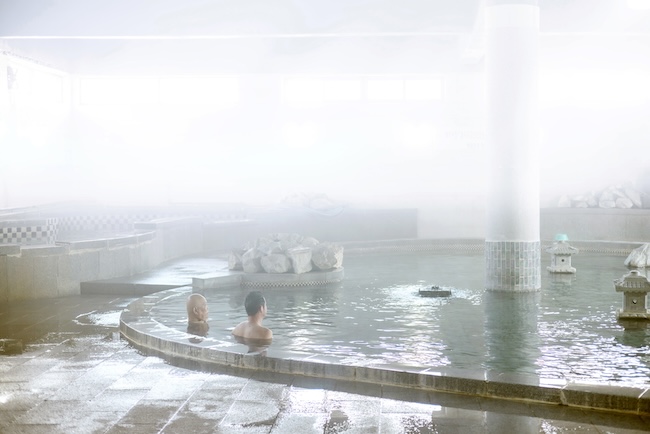
The spirit of Baekam’s hot springs lives on, as other hot spring establishments in the area continue to thrive. (Image courtesy of Yonhap)
SEOUL, Feb. 22 (Korea Bizwire) – The renowned Baekam Hot Springs in Uljin County, operated by Hanwha Resorts, has recently closed its doors, marking the end of an era for one of the region’s most cherished natural attractions.
Historically celebrated for its exceptional water quality and therapeutic benefits, Baekam Hot Springs has been a subject of admiration, inspiring numerous scholars and literati over the centuries to extol its virtues in poetry and prose.
Despite the closure of Hanwha’s facility, the spirit of Baekam’s hot springs lives on, as other hot spring establishments in the area continue to thrive, offering solace and rejuvenation to visitors seeking the healing embrace of nature’s warmth.
A visit to one of these enduring hot springs reveals a quaint, communal bathhouse ambiance, where for a modest fee, adults can indulge in the curative waters that require no artificial heating, thanks to their naturally high temperatures reaching up to 45.9°C (114.62°F).
The importance of maintaining the natural temperature of hot spring water lies in its unadulterated therapeutic qualities, ensuring that the beneficial minerals and compounds are delivered to the body in their most potent form.
Baekam’s waters, rich in sodium bicarbonate and sourced from an impressive depth of 241 meters, are a testament to the enduring allure of hot springs as sources of health and wellness.

The closure of Hanwha’s Baekam Hot Springs has cast a shadow of concern among local officials and residents. (Image courtesy of Yonhap)
Yet, the closure of Hanwha’s Baekam Hot Springs has cast a shadow of concern among local officials and residents, reflecting broader challenges facing the hot spring industry in South Korea.
The decline in hot spring popularity is not unique to Uljin, as other famed locations like Suanbo in Chungju have also experienced downturns, exacerbated by the COVID-19 pandemic and changing tourism trends.
The pandemic, in particular, dealt a significant blow to the hot spring sector, with visitor numbers plummeting from a peak of over 63 million in 2019 to around 34 million in 2021, only to partially recover to 41 million in 2022.
This decline contrasts sharply with the trend of Korean tourists flocking to Japanese hot springs, highlighting a need for domestic hot springs to adapt and innovate to recapture the interest of travelers.
Experts suggest that the domestic hot spring industry has been slow to align with evolving travel preferences, losing ground to upscale spa experiences that offer modern amenities and services.

The Banyan Tree Spa in Seoul have seen significant increases in guests, even during the pandemic, by offering luxurious spa treatments and outdoor relaxation spaces. (Image courtesy of Banyan Tree)
For instance, the Park Roche Resort & Wellness in Jeongseon, Gangwon Province, and the Banyan Tree Spa in Seoul have seen significant increases in guests, even during the pandemic, by offering luxurious spa treatments and outdoor relaxation spaces.
In contrast, Japan’s hot spring culture continues to thrive, supported by both government initiatives and community efforts to preserve and enhance the traditional onsen experience. The Japanese approach of integrating hot springs with local tourism, culture, and hospitality offers valuable lessons for revitalizing South Korea’s hot spring industry.
Experts are unanimous in their call for national support and a community effort. Park Kang-seop, former Presidential Secretary for Tourism Promotion, emphasized the need for specialized strategies to redirect the tourism demand currently flowing to Japan back to domestic destinations.
He suggested that local governments and hot spring resorts should modernize by opening outdoor hot springs and designing hot spring districts with traditional Korean houses, hanok, to align with contemporary trends.
Lina Jang (linajang@koreabizwire.com)






